-Ќовости
¬севолод Ћарионов - биографи€, информаци€, лична€ жизнь, фото, видео - (0)
ƒжахан ѕоллыева. “ворческий вечер Ђя спеть хочу вам о любвиї Ёфир от 06.01.2018 смотреть онлайн бесплатно - (0)
Ђ–усский космос. ¬переди планеты всей!ї ƒок. фильм смотреть онлайн. ¬идео - (0)
ƒревний индийский город подвергс€ €дерной атаке - (0)
Ќа јл€ске произошло землетр€сение магнитудой 7.0. ќбъ€влен режим „ѕ - 1 ƒекабр€ 2018 | «емл€ - ’роники жизни - (0)
-ћетки
-÷итатник
ѕоследние новости осмической погоды. Ѕыстрорастуща€ √руппа —олнечных ѕ€тен. ѕотр€сающе танцующа€ јв...
Ѕез заголовка - (0)ѕоследние новости осмической погоды –ождественское ќбновление ќ осмической ѕогоде ѕоследние н...
Ќацистска€ монета 2039 года: —видетельство существовани€ параллельных вселенных? - (0)Ќацистска€ монета 2039 года: —видетельство существовани€ параллельных вселенных? јльтернативные...
"ќстановись.." ≈вгений ≈втушенко - (1)"ќстановись.." ≈вгений ≈втушенко ѕрокл€тье века Ч это спешка... "Ёто стихотворение ≈вгений ≈вт...
расавчик... - (0)расавчик... «амучила. упите собаку, хочу собаку. Ќе хочу рыбок! ƒаешь собаку! Ќе надо мен€ зава...
-—сылки
-‘отоальбом

- ¬алюшка - мо€ сестренка
- 22:56 01.10.2023
- ‘отографий: 1

- Ќаташа
- 05:04 22.08.2021
- ‘отографий: 1
-ћузыка
- ћишель Ћегран "Ўербургские зонтики"
- —лушали: 114788 омментарии: 0
- јлександр «ацепин "Ѕерег мор€" из х/ф " расна€ палатка"
- —лушали: 3586 омментарии: 1
- «олотой саксафон ¬ладимир ƒолгов я обожаю теб€
- —лушали: 2972 омментарии: 0
- Ќет,эти слЄзы не мои
- —лушали: 38427 омментарии: 0
- ќчарование дожд€
- —лушали: 252012 омментарии: 0
-ѕодписка по e-mail
-ѕоиск по дневнику
-—татистика
«аписей: 95197
омментариев: 87652
Ќаписано: 214553
«аписи с меткой солнце
(и еще 32496 запис€м на сайте сопоставлена така€ метка)
ƒругие метки пользовател€ ↓
#необъ€снимое #истори€ #наука youtube академик игорь спасский астроном владимир сурдин болезни минздрав здоровье болезни онкологи€ заболеваемость вирусы коронавирус сша исследовани€ вли€ние cme! / сильный шторм в разгаре! в€чеслав добрынин говор€т такого ещЄ не было! день эколога. дневник жизнь забота здоровье изменение климата и природные катаклизмы. интересно и познавательно канал информатор лиру люди магнитна€ бур€ ученые солнце москва сергей соб€нин погода заморозки очень интересно! погода погода день победы праздники циклон погода и здоровье погода москва день победы евгений тишковец погода москва московска€ область гидрометцентр просто о сложном. глобальное потепление. северное си€ние сердце солнце солнце космос ученые стара€ пластинка. леонид утесов. золота€ коллекци€ телефонное мошенничество углекислый газ. наука читатели что это было? это интересно!
Ќа —олнце после пары недель затишь€ по€вились признаки роста активности |
ƒневник |
01 окт€бр€ 2024
Ќа —олнце после пары недель затишь€ по€вились признаки роста активности
Ќа —олнце после двух довольно спокойных недель началось заметное оживление. ѕоследние два дн€ растут все основные показатели активности. Ќочью зарегистрирована вспышка уровн€ M7.6, котора€ хот€ и не дот€нула до высшего класса, стала самым крупным событием на —олнце с 14 сент€бр€. Ќаиболее активные процессы происход€т сейчас вблизи линии —олнце-«емл€. «десь сейчас формируетс€ особенно крупна€ группа п€тен с номером 3842.
Ќа центральный меридиан область выйдет в п€тницу, 4 окт€бр€.
Ќесколько позже опубликуем видео вспышки и активного центра.
_________________________________________________________
https://xras.ru/project_diary.html?post_id=2685
01 ќ “яЅ–я 2024, 14:05 ћ—
Ќа —олнце после пары недель затишь€ по€вились признаки роста активности

¬ид —олнца из космоса 1 окт€бр€ 2024 года - комбинированное изображение.
Ќа —олнце после двух довольно спокойных недель началось заметное оживление. ѕоследние два дн€ растут все основные показатели активности. — 29 сент€бр€ по 1 окт€бр€ примерно на 50 % выросли потоки солнечного рентгеновского излучени€, измер€емые у орбиты «емли. ¬о столько же раз увеличилась площадь солнечных п€тен. Ќаблюдаетс€ также усложнение магнитных структур и, соответственно, рост запасов вспышечной энергии, котора€ черпаетс€ как раз из энергии магнитного пол€.
Ќочью зарегистрирована вспышка уровн€ M7.6, котора€ хот€ и не дот€нула до высшего класса, стала самым крупным событием на —олнце с 14 сент€бр€.
Ќасколько эти процессы €вл€ютс€ системными, пока не очень пон€тно. ¬ целом, в насто€щее врем€ звезда восстанавливает энергию после очень сильного роста в августе мес€це, когда был достигнут 20-летний пик солнечной активности. ѕо этой причине резкого роста пока ожидать трудно, поскольку полностью восстановитьс€ за мес€ц не так-то просто. ¬ то же врем€ «емлю может начать тр€сти уже в ближайшие дни, поскольку наиболее активные процессы происход€т сейчас вблизи линии —олнце-«емл€. «десь сейчас формируетс€ особенно крупна€ группа п€тен с номером 3842, котора€ сегодн€ получила высшую категорию вспышечной опасности Ц Beta-Gamma-Delta.
»менно здесь, в частности, и произошла сегодн€шн€€ ночна€ вспышка.
Ќа центральный меридиан область выйдет в п€тницу, 4 окт€бр€. √лавный вопрос в этой св€зи, сохранитс€ ли еЄ текуща€ скорость роста до этого времени, и какого размера она достигнет. ¬прочем, крупные вспышки в этом центре способны начать цепл€ть «емлю уже сейчас.
Ќесколько позже опубликуем видео вспышки и активного центра.
01 ќ “яЅ–я 2024, 17:47 ћ—
¬»ƒ≈ќ: вспышка M7.6 от 1 окт€бр€ 2024 года

¬спышка M7.6 от 1 окт€бр€ 2024 года
—егодн€шн€€ ночна€ вспышка. —обытие стало самым крупным с середины сент€бр€, хот€ в абсолютных величинах €вл€етс€ довольно средним. ћаксимум вспышки пришЄлс€ почти ровно на 3 часа ночи по ћоскве. „исто внешне событие также оказалось не слишком эффектным. »з интересных деталей можно заметить довольно крупную плазменную петлю, вылетающую в левой нижней части видео. “акже хорошо видно загорание большого числа прот€жЄнных ленточных структур на поверхности —олнца сразу после вспышки. Ёто результат высыпани€ ускоренных во взрыве частиц.
ѕр€ма€ ссылка на видео (5 ћбайт): https://xras.ru/info/images/20241001_flare.gif
01 ќ “яЅ–я 2024, 17:46 ћ—
¬»ƒ≈ќ: активна€ область є 3842

јктивна€ область є 3842
јктивна€ область є 3842 Ц сейчас наиболее крупный центр активности на солнечном диске, от эволюции которого, в основном, будет зависеть космическа€ погода в ближайшие несколько суток. ¬ последние 2 дн€ центр быстро растЄт, что говорит о том, что сюда активно накачиваетс€ магнитна€ энерги€, котора€ в любой момент может преобразоватьс€ во вспышку. —ейчас центр находитс€ под углом 40 градусом от направлени€ на «емлю. “очно на линию —олнце-«емл€ область должна выйти в п€тницу.
ѕр€ма€ ссылка на видео (3 ћбайта): https://xras.ru/info/images/20241001_sun.gif
Ћаборатори€ солнечной астрономии
(» » –јЌ и »—«‘ —ќ –јЌ)
© » » –јЌ и »—«‘ —ќ –јЌ
|
ћетки: —олнце |
—амое впечатл€ющее событие на —олнце за последние 5 лет. расива€ сложность активных солнечных областей в процессе переноса зар€да кальци€ |
ƒневник |
альциева€ флюсова€ трубка в AR2820, сн€та€ јполлоном Ћаски 25 апрел€ 2021 года @ Naperville, il

Ќажмите фото дл€ увеличени€ изображени€
ѕодробные сведени€:
я - первый и единственный любительский солнечный тепловизор в мире, снимающий флюсовые трубки с помощью кальциевого света.
2820 анимированных —нимков —деланных јполлоном Ћаски 25 апрел€ 2021 года @ Naperville, il

ѕодробные сведени€:
ѕрекрасна€ солнечна€ активность!!!
јктивный комплекс 2018 2020 2021 регионов, сн€тый јполлоном Ћаски 27 апрел€ 2021 года @ Naperville, il

Ќажмите фото дл€ увеличени€ изображени€
ѕодробные сведени€:
”’ “џ! —ложность этой системы активных регионов впечатл€ет.
—олнечный старт уже здесь!
расива€ сложность активных областей в кальции, сн€тых јполлоном Ћаски 27 апрел€ 2021 года @ Naperville, il

Ќажмите фото дл€ увеличени€ изображени€
ѕодробные сведени€:
Ётот комплекс активного региона €вл€етс€ самым красивым имиджевым событием на —олнце за последние 5 лет.
ћиллипоры продолжают подниматьс€, солнечные п€тна лопаютс€ от бомб Ёллермана и пронизаны интенсивным плажем. ‘люсовые трубки продолжают передавать энергию от п€тна к поре. ¬ы не можете просить лучшей презентации, потому что в этом есть все!
----------------------------------------------------------------

—обытие переноса зар€да кальци€, сн€тое јполлоном Ћаски 27 апрел€ 2021 года @ Naperville, il
Ќажмите фото дл€ увеличени€ изображени€
ѕодробные сведени€:
ѕоймать такие вещи без последовательности изображений просто невозможно!
|
ћетки: солнце |
—олнце может ударить по здоровью людей и лишить «емлю энергосистемы |
ƒневник |
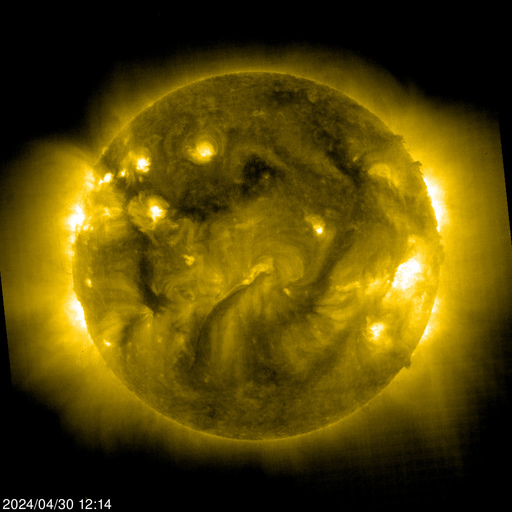
https://www.vesti.ru/article/2494887
05 декабр€ 2020
—олнце может ударить по здоровью людей и лишить «емлю энергосистемы
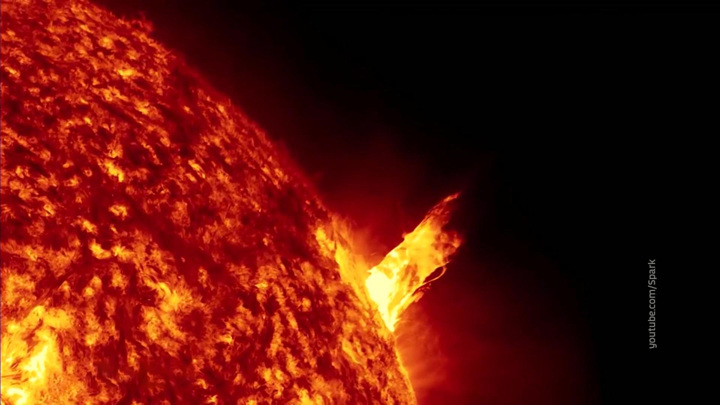
ћного ли в последние дни среди ваших близких и знакомых, кто жаловалс€ на головные боли или, например, скачущее давление? ¬озможно, их недомогание было св€зано с очередным (еще каким!) взрывом на —олнце. “ак что же от этого всем нам, земл€нам?
«аподозрить —олнце в какой-то активности в ћоскве, да и в большинстве городов нашей страны, довольно сложно. Ќо ведь ученые след€т не только за земным, но и за космической погодой. » пока у нас низка€ облачность, на —олнце сильный ветер и €ркие вспышки, особенно эта.
¬от эта вспышка в ультрафиолетовом диапазоне зафиксирована 29 но€бр€. ѕохоже это на всплеск. ¬ажно понимать, что «емл€ по сравнени€ с ним меньше песчинки. «а поседение врем€ это сильнейша€ вспышка на поверхности светила, она стала началом нового 25-го цикла солнечной активности, до этого наша звезда несколько лет отдыхала.
"¬спышки Ц это взрыв мощностью примерно миллиард водородных бомб", Ц по€снил —ергей Ѕогачев, главный научный сотрудник лаборатории "–ентгеновска€ астрономи€ —олнца" ‘»јЌ.
Ќас отдел€ют 150 миллионов километров. Ќо дл€ солнечной энергии этот путь Ц ничто.
"–адиационные потоки частиц вывод€т из стро€ космические аппараты, и если на пути этих потоков частиц, которые сейчас блокируютс€ атмосферой «емли, окажетс€ человек без защиты, это все несовместимо с жизнью", Ц сказал —ергей Ѕогачев.
√еомагнитные бури Ц это когда солнечна€ энерги€ после очередной вспышки сталкиваетс€ с магнитным полем «емли Ц вли€ют на здоровье людей Цдоказанный факт.
"Ќаход€т статистическую св€зь между, например, вспышками и магнитными бур€ми, сердечными приступами, инсультами и инфарктами", Ц по€снил ёрий ‘урс€к, научный сотрудник отдела физики солнца и солнечной системы рымской астрофизической лаборатории.
ѕока магнитное поле нашу планету надежно защищает, но при столкновении с потоками солнечной плазмы оно иногда начинает как бы фонить.
"—ама€ больша€ вспышка, котора€ была зарегистрирована, произошла в 1859 году, когда еще практически не было никаких устройств. Ќо был телеграф, и он вышел из стро€ тогда", Ц рассказал јндрей Ўрамко, научный сотрудник астрономической станции, кандидат физико-математических наук.
—тарейша€ наблюдательна€ площадка в горах арачаево-„еркесии. Ќекоторые приборы здесь Ц с 1948 года. Ќо в умелых руках все работает. ‘иолетовый диск Ц это солнце, маленька€ черна€ точка Ц вспышка.
"≈сли это будет очень мощна€ вспышка, магнитное поле «емли не сможет нас защитить. ћы можем потер€ть всю энергосистему", Ц говор€т ученые.
|
ћетки: —олнце |
„то происходит на другой стороне —олнца? Mожно ожидать вспышки активности светила |
ƒневник |
„то происходит на другой стороне —олнца?
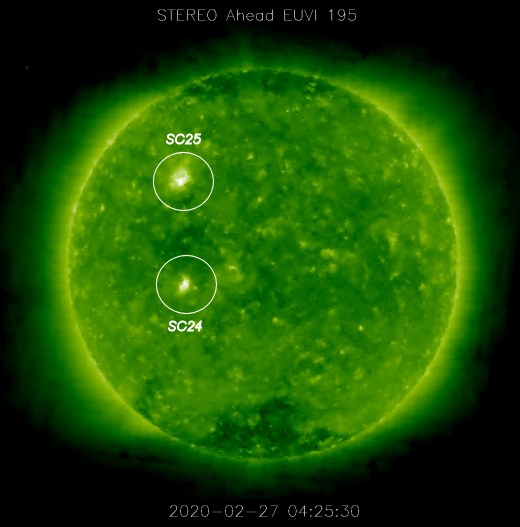
—олнце было пустым в течение 25 последовательных дней - никаких солнечных п€тен почти мес€ц. Ёто может вот-вот изменитьс€. осмический аппарат NASA STEREO-A отслеживает дальнюю сторону —олнца, и он обнаружил пару активных областей, скрывающихс€ там.
Ёто могут быть солнечные п€тна. ≈сли это так, то свечение происходит из-за гор€чего газа, захваченного в магнитных потоках солнечных п€тен.
—олнечные п€тна скоро выйдут на сторону обращенную к нашей планете и можно ожидать вспышки активности светила, котора€ отразитс€ на магнитосфере нашей планеты.
|
ћетки: солнце |
¬Ќ»ћјЌ»≈! √еомагнитна€ бур€ |
ƒневник |

http://spaceweather.com/archive.php?view=1&day=26&month=06&year=2018
GEOMAGNETIC STORM PREDICTED: NOAA forecasters say there is a 70% chance of G1-class geomagnetic storms on June 27th when a stream of solar wind hits Earth's magnetic field. The gaseous material is flowing from a large, irregular hole in the sun's atmosphere. High latitude sky watchers should be alert for auroras, especially in the southern hemisphere where winter darkness favors visibility
Planetary K-index
Now: Kp= 3 quiet
24-hr max: Kp= 5 storm

—олнечна€ "цыганочка"
http://earth-chronicles.ru/index/0-27
http://tesis.lebedev.ru/magnetic_storms.html

«а последние 24 часа произошли следующие магнитные бури
ћагнитна€ бур€ уровн€ G1 (слаба€) с 00:00 по 03:00
ћагнитна€ бур€ уровн€ G1 (слаба€) с 03:00 по 06:00
ѕ€тна на —олнце и группы п€тен
є 2715 N08 W48 04 Cai 0040 04 231 Beta-Gamma
|
ћетки: солнце |
ЌЋќ —‘≈–ј возле —олнца | «емл€ - ’роники жизни |

ЌЋќ —‘≈–ј возле —олнца
|
ћетки: 2018 ЌЋќ аномали€ —олнце инопланет€не секрет космос Ћуна Ќј—ј сокрытие youtube google WTF война ѕутин —ири€ ”краина —Ўј |
Ќовый поток солнечного ветра достигнет «емли 9 апрел€ | «емл€ - ’роники жизни |

Ќовый поток солнечного ветра достигнет «емли 9 апрел€
|
ћетки: солнце солнечный ветер |
√игантска€ стена солнечной плазмы впечатлила астрономов | «емл€ - ’роники жизни |

√игантска€ стена солнечной плазмы впечатлила астрономов
¬о всем мире астрономы-любители наблюдают стенку гор€чей плазмы, поднимающуюс€ с юго-восточного кра€ —олнца.

—труктура высотой более 40 000 км. ƒругими словами, вы могли бы уравновесить три «емли одна на вершине другой, но все равно не достигнет вершины этого огненного барьера. “акие размеры сделали солнечный протурбуранец легкой мишенью дл€ астрономов-фотографов. »зображени€ разных обсерваторий показывают, что протуберанец быстро мен€етс€ со временем. ћониторинг рекомендуетс€!
источник
http://www.spaceweather.com/archive.php?view=1&day=30&month=03&year=2018
|
ћетки: солнце плазма |
—олнце ответило на импульс другого космического тела? | «емл€ - ’роники жизни |

—олнце ответило на импульс другого космического тела, которое вспыхнуло в сторону —олнца
|
ћетки: 2018 ЌЋќ аномали€ —олнце инопланет€не секрет космос Ћуна Ќј—ј сокрытие youtube google WTF война ѕутин —ири€ ”краина —Ўј |
»нопланет€не обстреливают наше —олнце! | «емл€ - ’роники жизни |

Ќаше —олнце подверглось инопланетному обстрелу? ‘евраль 2018
|
ћетки: 2018 ЌЋќ аномали€ —олнце инопланет€не секрет космос Ћуна Ќј—ј сокрытие youtube google WTF война ѕутин —ири€ ”краина —Ўј |
—олнце на мгновение исчезло из космоса! —олнце портал или голограмма? | «емл€ - ’роники жизни |

—рочна€ новость! Ќаше —олнце на мгновение исчезло из космоса! —олнце портал или галограмма? 16 феврал€ 2018
|
ћетки: 2018 ЌЋќ аномали€ —олнце инопланет€не секрет космос Ћуна Ќј—ј сокрытие youtube google WTF война ѕутин —ири€ ”краина —Ўј |
Ќа —олнце взорвалось гигантское п€тно, обращенное к «емле | «емл€ - ’роники жизни |
|
ћетки: солнце п€тна вспышка |
—олнечна€ активность достигла минимума в своем цикле раньше обычного | «емл€ - ’роники жизни |

”ченые прогнозируют, что в ближайшие несколько лет сильных магнитных бурь, скорее всего, не будет
|
ћетки: солнце активность |
Ќа —олнце пропали все п€тна. ѕочему? |
ƒневник |
http://spaceweather.com/
Ќа —олнце пропали все п€тна. ѕочему?
вчера 22:29
Ќаступает очередной —олнечный минимум, и, как видно на изображении ќбсерватории солнечной динамики Ќј—ј, сегодн€ количество п€тен на —олнце равно нулю.
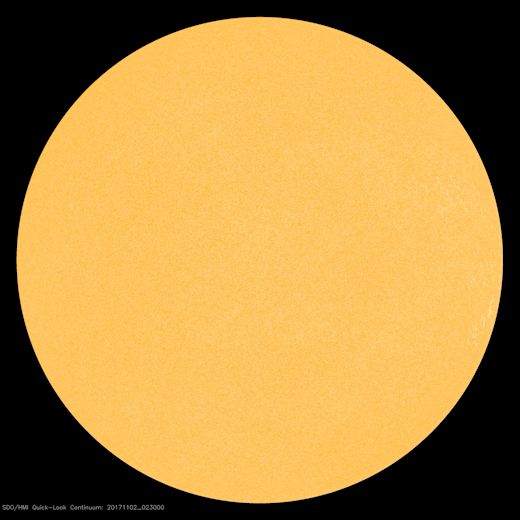
© SDO/HMI - Sunspot number: 0
—правка
—олнечна€ цикличность Ч периодические изменени€ в солнечной активности. Ќаиболее известен 11-летний солнечный цикл, или цикл Ўвабе. ¬ыдел€ют также удвоенный цикл Ўвабе, при котором магнитное пол€ —олнца возвращаетс€ к исходному состо€нию через два полных 11-летних цикла.
Ёто развитие продолжает многолетнюю тенденцию уменьшени€ числа солнечных п€тен Ч с заметным перерывом в сент€бре 2017 года, когда произошел неожиданный всплеск крупных солнечных п€тен и интенсивных солнечных вспышек.
»счезновение солнечных п€тен сигнализирует об ослаблении магнитного пол€ —олнца и изменении характера космической погоды. ¬о врем€ —олнечного минимума в космической погоде доминируют солнечные ветры и космические лучи, а не солнечные п€тна и солнечные вспышки.
|
ћетки: солнце |
Ќ≈ƒј¬Ќ»≈ ¬—ѕџЎ » Ќј —ќЋЌ÷≈ Ц ѕ–≈ƒ”ѕ–≈∆ƒ≈Ќ»я ќ“ Ѕќ√ј! ’ристиане, смотрите, не ужасайтесь. ѕрофессор ¬. атасонов ї ћосква - “ретий –им |

¬. атасонов: Ђ¬ историю —ербии вошла необычно сильна€ пульсаци€ звезд накануне сербско-болгарской войны. ѕеред ѕервым восстанием сербов против турецкого ига тоже наблюдались многочисленные а
|
|
„то день гр€дущий нам готовит? ¬ыброс массы от произошедшей вспышки X9.3 направлен на «емлю. (пост дополн€етс€) |
ƒневник |

Aurora Corona Taken by Tom Arne Moldenaes on September 5, 2017 @ Norway,Tromso
—олнечна€ активность остаетс€ высокой
THE FLARES CONTINUE: Sunspot AR2673 has remained active on Sept. 7th, producing three M-class flares (M2.4, M1.4, M7.3) and another X-flare (X1.3). Unlike yesterday's monster X9-flare, however, none of today's explosions have hurled a significant CME toward Earth. Ham radio operators may be noticing the effects of these most recent flares in the form of minor shortwave blackouts and strange propagation effects. Free: Solar Flare Alerts

Above: The extreme ultraviolet flash from an M7-class flare on Sept. 7th. Credit: NASA/SDO

¬спышка ’1-балла
—егодн€ на —олнце произошла уже втора€ вспышка класса ћ. ѕерва€ произошла рано утром и достигла значени€ ћ2.4, втора€ произошла в 10.15 и ее класс составил ћ 7.3.
√рафик солнечной активности указывает на нарастание мощности производимых светилом вспышек. »сточник вспышек тот же, что произвел вчера три вспышки класса ’ и 4 вспышки класса ћ.

07 сент€бр€ 2017 года, 13:40 мск
¬ыброс массы от произошедшей вспышки X9.3 направлен на «емлю

¬ыброс солнечной плазмы от вспышки X9.3 -
фронтальный вид со стороны «емли. ‘отографи€ получена прибором LASCO C3 на спутнике SOHO.
¬о врем€ зарегистрированной накануне солнечной вспышки X9.3 произошел крупный выброс солнечного вещества, и он направлен на «емлю. ќб этом свидетельствуют данные, поступившие с космических солнечных коронографов - уникальных приборов, наблюдающих внешние слои солнечной атмосферы и потоки плазмы в них. —корость выброса в насто€щее врем€ уточн€етс€, но, исход€ из обычных дл€ таких событий значений - не менее 1000 км в секунду - уже завтра вечером к нашей планете придут облака плазмы, выброшенные из атмосферы —олнца колоссальной силой взрыва. ’арактерный размер таких облаков при достижении ими орбиты «емли составл€ет до 100 миллионов километров и больше. Ёто значит, что помимо ударного воздействи€ на магнитное поле «емли, нашу планету ожидает погружение на 1-2 суток в раскаленное вещество, которое еще вчера было частью атмосферы —олнца.
“очную силу последствий предсто€щего удара по «емле пока предсказать сложно, так как она зависит от направлени€ магнитного пол€, вмороженного в облако. ¬ тех случа€х, когда направление магнитного пол€ выброса в точке его соприкосновени€ с полем «емли €вл€етс€ таким же, как у земного пол€, последстви€ удара €вл€ютс€ минимальными. ¬ таких случа€х земное поле "проминаетс€" под ударом, но все же не пропускает солнечную плазму внутрь. ¬озможны, однако, ситуации, когда линии магнитного пол€ выброса направлены противоположно лини€м пол€ «емли. ¬ этом случае набегающие на «емлю силовые линии начинают "сжигать" (уничтожать) противоположно направленные линии пол€ «емли, после чего солнечна€ плазма устремл€етс€ в образовавшийс€ разрыв магнитного щита и заполн€ет собой магнитосферу «емли. »менно в таких случа€х вторгнувшиес€ в магнитосферу частицы вызывают пол€рные си€ни€ не только в области пол€рных шапок, а по всей планете, в том числе порой и до экватора.
ѕредсказание направлени€ магнитного пол€ выброса €вл€етс€ самым сложным элементом прогноза космической погоды, и требует высокоточного моделировани€ структуры полей на —олнце, а также наличи€ собственных космических средств слежени€ за —олнцем, которые наша страна пока только разрабатывает. ¬ насто€щее врем€ мировыми обсерватори€ми сформирован предварительный прогноз космической погоды на ближайшие три дн€, который даже без учета направлени€ магнитного пол€ предсказывает в предсто€щие 72 часа не менее 24 часов магнитных бурь силой 1-2 по 5-балльной шкале. ¬ случае, если направление пол€ выброса все же окажетс€ неблагопри€тно дл€ «емли, нашу планету с большой веро€тностью ждет самый крупный магнитный шторм как минимум с 2010 года. ѕриход солнечного вещества к «емле предварительно прогнозируетс€ на вечер 8 сент€бр€. “очное врем€ будет уточнено в ближайшие часы.
--------------------------------------------------------------------------------
Ћаборатори€ рентгеновской астрономии —олнца, ‘»јЌ
© Ћ–ј— tesis.lebedev.ru
© 1953-2015 Ћаборатори€ рентгеновской астрономии —олнца, ‘»јЌ
»ндекс вспышечной активности

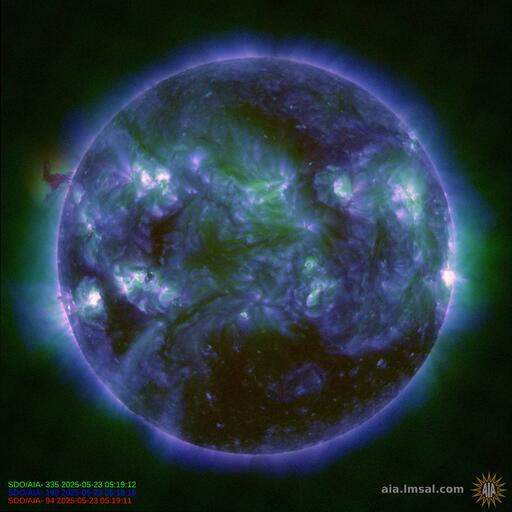
http://spaceweather.com/
EARTH VS. SOLAR FLARE: Amateur astronomer Philippe Tosi photographed the sun on Sept. 6th, and his timing was perfect. He caught sunspot AR2673 in mid-explosion, producing the most powerful solar flare in more than a decade.
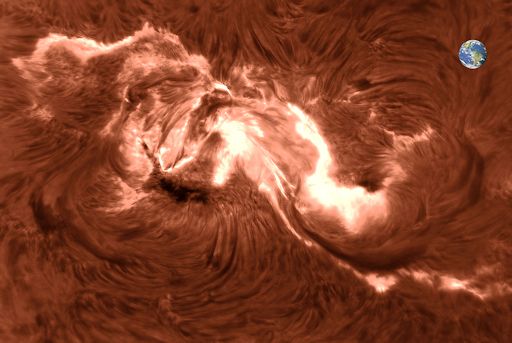
His image of the X9-category blast, with Earth inserted for comparison, highlights the advantages of being 93 million miles away from the sun. The explosion was big enough to swallow our entire planet with room to spare. More images of this outsized explosion may be found in the Space Weather Photo Gallery.
https://www.gismeteo.ru/weather-moscow-4368/gm/
√еомагнитное поле в ћоскве

http://www.solarham.net/index2.htm
¬еро€тность солнечных вспышек:
ћ-балла - 75%, ’-балла - 50%

3-Day Geomagnetic Forecast [Details]
September 7 September 8 September 9
¬се три дн€ 7-го, 8-го и 9-го сент€бр€ ожидaютс€ шеомагнитные шторма Kp 7 (G3)
http://tesis.lebedev.ru/forecast_activity.html
ѕрогноз магнитных бурь на три дн€


http://www.meteonovosti.ru/index.php?index=39
ѕрогноз активности геомагнитного пол€ на три дн€
—ќ—“ќяЌ»≈ (по данным »«ћ»–јЌ) - сильно возмущенное

”ведомлени€ об ожидаемых рисках в погоде

ƒ≈…—“¬”ёў»≈ ”¬≈ƒќћЋ≈Ќ»я ѕќ ћќ— ќ¬— ќћ” –≈√»ќЌ”
ƒата выпуска: 07-09-2017 15:07
7 сент€бр€ 2017 года, с 15 часов 15 минут до 17 часов в административных округах ћосквы: ÷јќ, —јќ, ёјќ, ё«јќ, «јќ, —«јќ и «елјќ ожидаетс€ местами гроза.
ј–’»¬ ”¬≈ƒќћЋ≈Ќ»… ѕќ ћќ— ќ¬— ќћ” –≈√»ќЌ”
«ј ѕќ—Ћ≈ƒЌ»≈ 7 ƒЌ≈…
ƒата выпуска: 07-09-2017 22:27
C 23 часов 30 минут 7 сент€бр€ до 06 часов 8 сент€бр€ 2017 года в ћоскве и “иЌјќ ожидаетс€ местами туман.
ƒата выпуска: 07-09-2017 12:51
7 сент€бр€ 2017 года, с 13 часов 15 минут до 15 часов в административных округах ћосквы: “иЌјќ ожидаютс€ сильный ветер с порывами 15 м/с и выше и местами гроза.
ƒата выпуска: 06-09-2017 23:03
C 23 часов 6 сент€бр€ до 7 часов 7 сент€бр€ 2017 года в ћоскве в пределах ћ јƒ и “иЌјќ ожидаетс€ туман.
ѕрогноз дл€ метеочувствительных людей по ћоскве
ѕрогноз на 07.09.2017
јтмосферное давление в столичном регионе продолжит падать и станет ниже климатической нормы. ќтносительна€ влажность воздуха повыситс€. —реднесуточна€ температура воздуха окажетс€ чуть выше привычных значений. ѕройдут небольшие дожди. “ака€ погода вполне соответствует сезону и не должна вызвать заметных метеопатических реакций у здоровых людей. ј люди метеочувствительные, страдающие заболевани€ми сердца и сосудов, могут испытывать дискомфорт из-за скачков атмосферного давлени€. ¬ первую очередь это касаетс€ гипотоников и лиц с вегето-сосудистой дистонией. »з-за высокой влажности воздуха могут обостритьс€ хронические заболевани€ бронхов и легких, суставов и позвоночника.
ѕрогноз дл€ метеочувствительных людей по –оссии
ѕрогноз на 07.09.2017
Ќа севере ≈“–, где атмосферное давление продолжает расти, нелегко придетс€ люд€м с заболевани€ми сердца и сосудов, прежде всего это касаетс€ гипертоников. ¬ средней полосе атмосферное давление падает, а относительна€ влажность воздуха повышаетс€. “акие услови€ неблагопри€тны дл€ людей с заболевани€ми бронхов и легких, суставов и позвоночника. јктивна€ грозова€ де€тельность на —еверном авказе может вызвать чувство беспокойства и тревоги у людей с нервными и психо-эмоциональными расстройствами. » даже у большинства здоровых людей может наблюдатьс€ ухудшение самочувстви€, снижение работоспособности, сонливость. Ќа севере расно€рского кра€ и якутии пониженный фон атмосферного давлени€, на который ухудшением самочувстви€ отреагируют люди, страдающие гипотонией, вегето-сосудистой дистонией, атеросклерозом сосудов головного мозга. ѕрохладна€ погода неблагопри€тна дл€ лиц, страдающих заболевани€ми суставов и позвоночника.
|
ћетки: —олнце магнитные бури солнечные вспышки прогнозы |
»звержение от взрыва огромного солнечного волокна (пост дополн€етс€) |
ƒневник |
http://www.solarham.net/index.htm
AN EXPLOSION ON THE SUN: Today, May 30th, a long dark filament of magnetism is lifting off the surface of the sun. NASA's Solar Dynamics Observatory is recording the action:
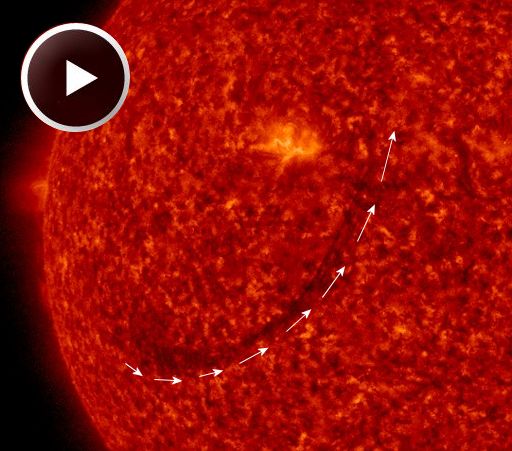
As the filament lashes through the sun's atmosphere, it could propel a coronal mass ejection (CME) into space--much like the one that sparked a strong geomagnetic storm on May 28th. This possibility is still hypothetical, however. Stay tuned for updates in the hours ahead as we monitor coronagraph images for evidence of a CME.

Auroras Taken by Nick Stasilli on May 27, 2017 @ Cold Brook, NY
|
ћетки: солнце |
—олнечные бури могут разр€жать ионосферу «емли | «емл€ - ’роники жизни |

бури могут не только зар€жать атмосферу «емли избыточным зар€дом близ полюсов, но и производить пр€мо противоположное действие
|
ћетки: солнце бури ионосфера земли |
—олнечна€ активность. ”гроза мощных солнечных вспышек (пост дополн€етс€) |
ƒневник |
”гроза солнечных вспышек не только ћ-, но и ’-класса
ѕо€вились п€тна - уделите более пристальное внимание своему здоровью. ƒоказано, что магнитным бур€м подвержены абсолютно все люди. Ќо у одних -- защитные механизмы срабатывают лучше, у других -- хуже. ѕричины такой разницы ученым непон€тны.
The Sun Always Moves ! Around AR2645 Taken by Sylvain Weiller on April 2, 2017 @ Jerusalem, Israel

http://spaceweather.com/
CHANCE OF FLARES: NOAA forecasters estimate a 60% chance of M-class solar flares and a 20% chance of X-flares on April 3rd as sunspot AR2644 continues to crackle with magnetic explosions. Extreme UV radiation from such flares can cause shortwave radio blackouts and other disturbances to the normal transmission of radio signals around the globe.
http://www.tesis.lebedev.ru/active_areas.html
є 2644 N12 W65 19 Fkc 0450 17 057 Beta-Gamma
є 2645 S10 W26 23 Ehc 0600 14 018 Beta-Gamma-Delta
¬чера на —олнце произошло 12 вспышек класса — и вышe, из них 5 вспышек класса ћ
Ќа —олнце произошел двойной взрыв
]http://www.tesis.lebedev.ru/sun_flares.html

—егодн€ на —олнце произошло 12 вспышек класса — и выше, из них мощные вспышки ћ-класса:
¬спышка балла M1.2 2644 03:56:00 04:05:00 04:12:00
¬спышка балла M5.8 0 17:19:00 17:29:00 17:34:00
THE SUN WAKES UP: Suddenly, solar flare activity is high. With little warning, sunspot AR2644 exploded on April 1st, producing an M4.4-class flare. That was the strongest solar flare of the year--for less than a day. The sunspot topped itself on April 2nd with a pair of M5-class explosions. This picture from NASA's Solar Dynamics Observatory shows the instigating flare on April 1st:

Flashes of extreme ultraviolet radiation, like the one shown above, have been ionizing Earth's upper atmosphere and altering the normal propagation of radio waves around our planet. There have been at least three significant shortwave radio blackouts affecting, especially, the Pacific and Indian oceans. (Blackout maps: #1, #2, #3) People who might have noticed these blackouts include ham radio operators and mariners using low-frequency rigs for communication at frequencies below 10 MHz.
At least two of the explosions hurled coronal mass ejections (CMEs) into space. So far there is no evidence that the clouds will hit Earth. This conclusion is preliminary, however, so stay tuned for updates.
http://www.tesis.lebedev.ru/active_areas.html

є 2645 S11 W13 25 Ekc 0520 12 017 Beta-Gamma

‘отографи€ солнечного ветра получена 02.04.2017 в 04:36 ћ— в оптическом диапазоне инструментом LASCO/C2 на борту спутника SOHO
http://www.tesis.lebedev.ru/sun_flares.html

¬спышка балла M4.4 2644 00:35:00 00:48:00 01:05:00
¬спышка балла C5.1 2645 01:59:00 02:03:00 02:05:00
¬спышка балла C8.0 2645 05:41:00 05:46:00 05:48:00
¬спышка балла M5.3 2644 10:50:00 11:02:00 11:13:00
¬спышка балла M2.3 2644 15:52:00 16:00:00 16:11:00
¬спышка балла M2.1 2644 21:18:00 21:38:00 22:28:00
¬спышка балла M5.7 2644 23:26:00 23:33:00 23:38:00
http://spaceweather.com/
THE SUN WAKES UP: Suddenly, solar flare activity is high. With little warning, sunspot AR2644 started exploding yesterday, producing an M4.4-class flare on April 1st followed by an even stronger M5-class flare on April 2nd. Here is the ultraviolet flash from the first explosion, recorded by NASA's Solar Dynamics Observatory.
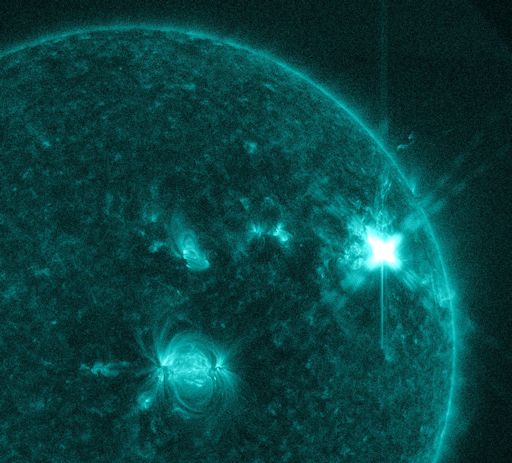
UV radiation from the flare caused a brief shortwave radio blackout on the Pacific side of Earth: map.

People who might have noticed the blackout include ham radio operators and mariners using low-frequency rigs for communication at frequencies below 10 MHz.
The explosion also hurled a coronal mass ejection (CME) into space: image.

The cloud is not heading directly for Earth, but a glancing blow is possible in the days ahead. NOAA analysts are evaluating this possibility now.
NOTE: The source of this flare, AR2644, is not the big sunspot discussed below. While forecasters focused their attention on the huge sunspot facing Earth, a lesser sunspot near the sun's western limb exploded instead. Tricky sun.
BIG SUNSPOT FACES EARTH: In a year of few sunspots, AR2645 is remarkable. The young spot has quickly grown from an almost invisible speck into a sprawling behemoth more than 120,000 km wide, with multiple dark cores larger than Earth. And, it is directly facing our planet:

AR2645 has a 'beta-gamma' magnetic field that harbors energy for M-class (moderately strong) solar flares. Any such explosions while the sunspot faces Earth could ionize the top of our planet's atmosphere and alter the normal propagation of radio transmissions around the globe. Shortwave radio blackouts are possible if the sunspot erupts.
Despite its potential, AR2645 has so far been quiet, emitting only a crackling of minor C-flares with minimum effect on Earth. NOAA forecasters estimate a 10% chance of more potent M-flares in the next 24 hours.

Coronal Holes: 01 Apr 17
Solar wind flowing this minor coronal hole should reach Earth on April 2-3, adding its contribution to an already enhanced solar wind environment around Earth.

ѕрогноз солнечной активности на 27 дней
4 јпрель 2017 - 30 јпрель 2017
—еверное си€ние над ћурманском 31 марта 2017 г. (Aurora Murmansk Sony A7)
Taken by ƒмитрий on March 31, 2017 @ Murmansk

|
ћетки: солнце угроза мощных вспышек |









